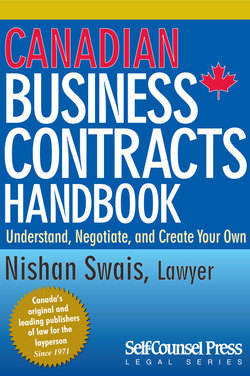Читать книгу Canadian Business Contracts Handbook - Nishan Swais - Страница 23
На сайте Литреса книга снята с продажи.
2.1c Advertising
ОглавлениеAre flyers, ads, and unsolicited emails trying to sell you the latest diet pills considered “offers” (in the legal sense), an “invitation to treat,” or something else? In fact, they are invitations to treat. However, ads require special comment because there are numerous laws that regulate advertising, which puts advertising in a legal class of its own.
A hammer displayed on a shelf in your local hardware store is, generally speaking, available for you to examine and, if you wish, purchase right on the spot. Ads, however, do not present you with the item itself, but rather information concerning the item: price, capabilities, quality, availability, and so on. Moreover, that information is being presented to you as an inducement to (make an offer to) buy the goods advertised.
However, because you cannot examine the goods themselves, ads create ample opportunity for abuse by the advertiser. The item may not be as described in the ad, the price may be different than advertised, or the item may not even be available when you arrive at the store (i.e., bait and switch). In reality, the invitation to treat contained in the ad may be an elaborate ruse designed to mislead you about a product, its price, or its availability.
As a consequence, the law contains dozens of items of legislation that strictly regulate this type of invitation to treat in order to ensure that potential buyers are not deceived. Price guarantees, restrictions on the use of the term “sale,” and the necessity to issue “rain checks” are all steps the law has taken to ensure that your trip to the store is not made under false pretences.
Advertising is, therefore, a special kind of invitation to treat because it is highly regulated.
